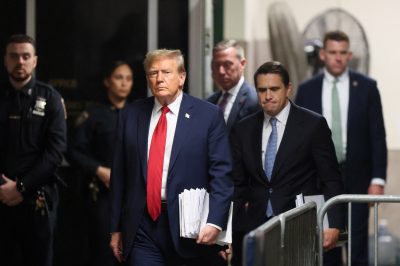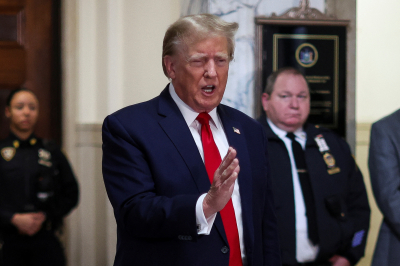Thomas Eakins
Thomas Eakins: Master of Realism in American Art
Introduction:
Thomas Eakins (1844–1916) was an American painter, sculptor, and photographer whose profound impact on the world of art earned him a lasting legacy as a master of realism. Born in Philadelphia during a transformative period in American history, Eakins emerged as a stalwart figure whose artistic pursuits transcended conventional boundaries.
Early Life and Education:
Thomas Cowperthwait Eakins was born on July 25, 1844, in Philadelphia, Pennsylvania. His early years were marked by an affinity for art, and his parents, recognizing his talent, supported his creative endeavors. In 1862, Eakins enrolled at the Pennsylvania Academy of the Fine Arts (PAFA), where he honed his skills under the guidance of renowned artists.
A Journey to Europe:
Eakins' quest for artistic enlightenment led him to the hallowed halls of European art institutions. From 1866 to 1870, he traversed the cultural landscapes of Paris and Spain, studying the works of Old Masters and immersing himself in the techniques that would later define his own style.
A Commitment to Realism:
Returning to the United States, Eakins became a champion of realism, a movement that sought to capture life as it truly appeared. His dedication to portraying subjects with unflinching honesty and precision set him apart in an era dominated by romanticism. Eakins' commitment to realism extended to his teaching methods, where he emphasized anatomy and dissection, earning him both admirers and detractors.
Influence as an Educator:
Eakins' impact on the art world wasn't confined to his canvases; it extended into the realm of education. He became a professor at PAFA in 1876, leaving an indelible mark on generations of aspiring artists. His unconventional teaching methods, which included the use of live models and an insistence on empirical understanding, revolutionized art education in America.
Controversies and Legacy:
While celebrated for his artistic prowess, Eakins faced controversies during his lifetime. His insistence on anatomical accuracy and his unfiltered approach to depicting the human form led to clashes with more conservative elements in both academic and public spheres. Despite these challenges, Eakins' legacy endured, and his influence on American art persisted long after his passing.
Notable Works:
• "The Gross Clinic" (1875): A dramatic depiction of a surgery, showcasing Eakins' mastery in capturing intensity and realism.
• "The Agnew Clinic" (1889): Another medical scene, demonstrating Eakins' penchant for portraying subjects with clinical precision.
• "Max Schmitt in a Single Scull" (1871): A celebrated rowing scene reflecting Eakins' fascination with capturing motion and athleticism.
Thomas Eakins' journey through the realms of art, education, and controversy marked him as a true pioneer of American realism. His legacy lives on in the halls of prestigious institutions, the strokes of aspiring artists, and the continued appreciation for his dedication to portraying life with unwavering truthfulness. Thomas Eakins remains not only a master of his craft but a beacon whose influence continues to shape the course of American art.
In conclusion, Thomas Eakins, the eminent American painter, sculptor, and educator, left an indelible mark on the world of art during the latter half of the 19th century. His commitment to realism, both in his art and teaching, positioned him as a trailblazer in an era characterized by various artistic movements. Eakins' unwavering dedication to portraying life with precision and honesty, despite facing controversies, secured his place as a master of his craft. His influence resonates not only in his notable works but also in the evolution of art education, transforming him into a beacon whose legacy continues to shape the trajectory of American art. Thomas Eakins stands as a testament to the enduring power of artistic vision and the profound impact a single individual can have on an entire artistic movement.
Thomas Eakins, the renowned American artist, has been featured or referenced in various books, films, documentaries, and websites that explore the history of art and the development of realism in American painting. Some notable mentions include:
•
Books:
• "Thomas Eakins: Artist of Philadelphia" by Lloyd Goodrich
• "Eakins Revealed: The Secret Life of an American Artist" by Henry Adams
• "Thomas Eakins and the Cultures of Modernity" by Akela Reason
•
Films and Documentaries:
• "Thomas Eakins: Scenes from Modern Life" (2001) — A documentary exploring Eakins' life and contributions to American art.
• "The Mystery of Eakins' Genius" (2018) — A film examining the artistic legacy and impact of Thomas Eakins.
•
Websites:
• The Metropolitan Museum of Art's official website features an online collection of Eakins' works, providing insights into his artistic evolution.
• The Smithsonian American Art Museum's website includes resources on Eakins, offering a digital archive of his paintings and related materials.
These references contribute to a broader understanding of Thomas Eakins' significance in the art world, his influence on realism, and the enduring legacy of his contributions to American art.





